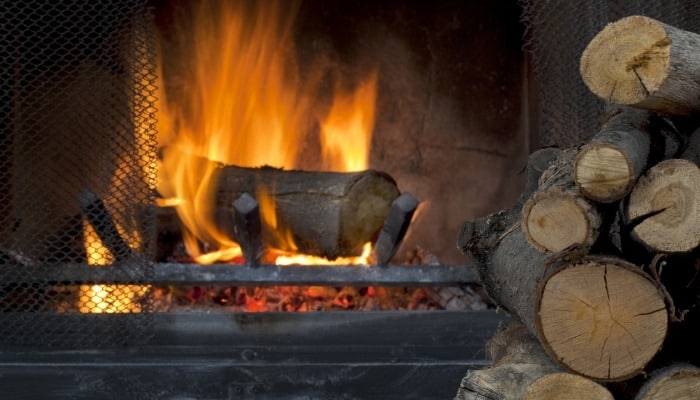Every type of wood can burn, but not every tree is suitable for use as firewood.
There are many things to consider when choosing what to use in your fire, including how hard it is to split, how long it burns, and what amount of heat it produces.
These can be complicated questions to answer, but we’ve compiled a list of the best firewood choices for both beginners and more seasoned fire-starters. Read on to find the right type for you!
1. Oak
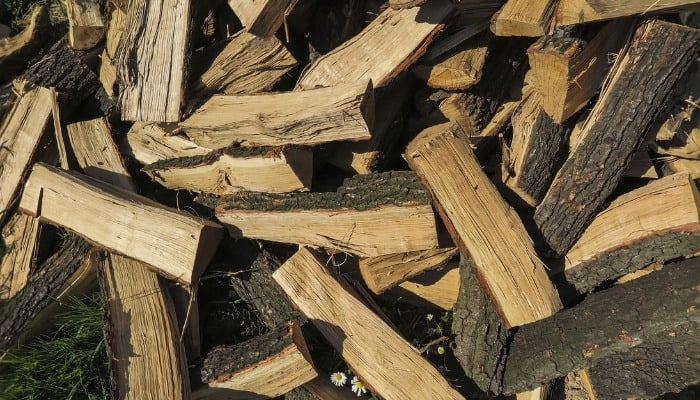
Oak is one of the most popular woods for burning and for good reason. It’s one of the hardest and strongest timbers, and very common around the USA and Canada.
This commonality makes up for the fact that oaks need about 150 years of growth before they are viable as firewood.
As with all other firewood trees, oak is best burned once it’s seasoned, which unfortunately is a long process when it comes to this tree species.
However, once it’s properly seasoned, it will produce a perfect-sized household flame that burns slowly while still producing tons of heat.
The traditional English yule log that many people burn every Christmas is usually made of oak.
- Easy to split: Yes
- Easy to light: No
- Heat output: High
- Burn rate: Slow
- Smoke produced: Low
- Time to season: 24 months
2. Hickory
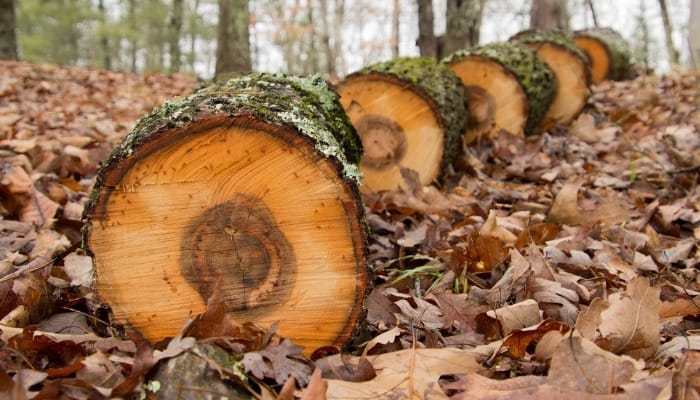
Hickory is another popular choice for firewood, and some consider it their overall top choice.
While it is very hard to split, the payoff is well worth it because its hardness makes it one of the longest-burning fire woods. It is also easy to light and produces more than enough heat.
Because hickory is so easy to light, you can use it before it is fully seasoned.
It will not burn as well when it is fresh, but unlike other hardwoods, you’ll still be able to light it and get a decent fire going.
- Easy to split: No
- Easy to light: Yes
- Heat output: High
- Burn rate: Slow
- Smoke produced: Medium
- Time to season: 12 months
3. Ash
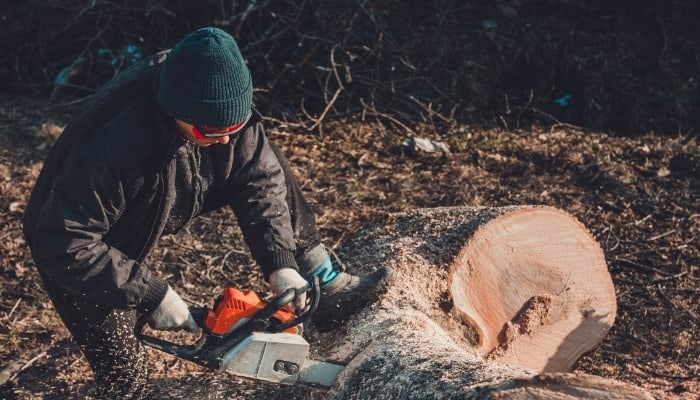
An old English proverb goes, “Seer or green, Ash is fit for a queen.”
This saying comes from the fact that ash has a naturally low moisture content, which means you can burn it when it’s undried and still get results.
Ash also has one of the longest burn rates, with one dried log able to burn for over an hour. This is one of the longest burn rates out there, even among hardwoods.
Ash is also aesthetically pleasing firewood since it is light in color with a defined, straight grain. Keep a couple in your fireplace in between burns, and you’ll have a warm and welcoming home.
- Easy to split: Yes
- Easy to light: Yes
- Heat output: Medium
- Burn rate: Slow
- Smoke produced: Low
- Time to season: 12 months
4. Black Locust
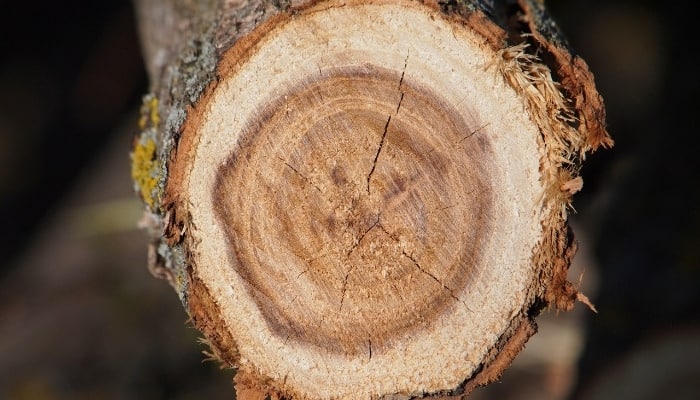
Black locust is a lesser-known hardwood but has many diehard fans who prefer it over the more common oak or ash.
It is easier to split than other hardwoods and has one of the highest heat outputs among popular hardwoods.
This high heat combined with its slow burn rate means it produces long-lasting hot coals, perfect for an overnight burn.
Because black locusts grow fast, they also have a shorter seasoning time than most other hardwoods.
Be careful chopping though: black locust trees have sharp spines near the leaves that can sneak up on you.
- Easy to split: Yes
- Easy to light: No
- Heat output: High
- Burn rate: Medium
- Smoke produced: Low
- Time to season: 6 months
5. Maple

Don’t pass them by for their delicious syrup alone; maple trees make great firewood. Maple is hardwood like oak and ash but less dense than most of its kind, making it very easy to split and light.
Maple’s easy handling and clean burn make it great beginner firewood. As a bonus, it smells incredible! It has one of the lowest smoke outputs and burns steadily from start to finish.
Because maple is softer than most other hardwoods, you’ll need more of it. However, its very short season time means you won’t have any problem using an ample amount.
- Easy to split: Yes
- Easy to light: Yes
- Heat output: Medium
- Burn rate: Slow
- Smoke produced: Low
- Time to season: 5 months
6. Honey Locust
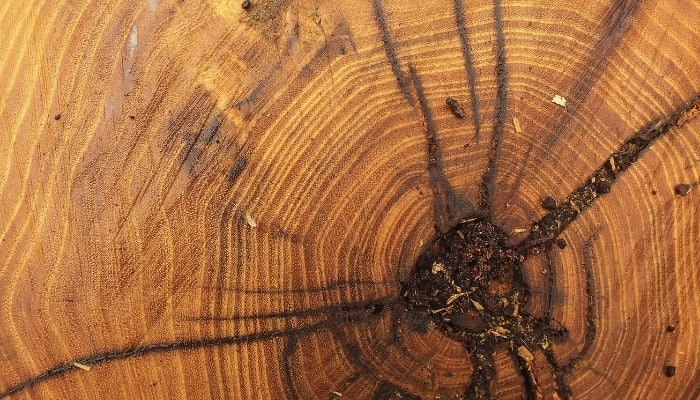
Honey locust has many similarities to its cousin the black locust, but it’s even easier to split and has a slower burn rate.
It is a great wood to use in both fireplaces and outdoors because it is very dense and therefore rot and moisture resistant.
Honey locust is especially good for cooking because it burns high-quality red coals that will heat food evenly both indoors and outdoors.
Honey locust is quite slow to season and must be seasoned fully before use or else it will produce too much smoke.
- Easy to split: Easy
- Easy to light: Yes
- Heat output: High
- Burn rate: Slow
- Smoke produced: Low
- Time to season: 24 months
7. Apple

Because of its difficulty to light and its medium burn rate, apple wood is a slightly less common fireplace wood than the others on this list.
However, because of its low smoke point, it is ideal for cooking, which is why you’ll see so many restaurants list “applewood smoked” meats on their menus.
Apple wood has an amazing aroma, which transfers into great flavor when smoking meats. This aroma also makes it very pleasant in fireplaces.
However, it is hard to light without an accelerant and can burn out easily, so it is a more advanced wood.
- Easy to split: No
- Easy to light: No
- Heat output: High
- Burn rate: Medium
- Smoke produced: Low
- Time to season: 10 months
8. Walnut

Walnut is a classic firewood beloved by all for its clean burn and medium heat output. Walnut is quite a neutral firewood that’s perfect for beginners.
It’s both easy to split and easy to light, which is somewhat rare for hardwood, and it grows plentifully around the USA. Walnut trees do not produce much sap, making them even easier to split.
One of the best parts of walnut wood is its woodsy aroma that will make your home smell like a picturesque log cabin.
Because walnut burns relatively fast, it’s a great addition to a fire that also contains oak or ash logs.
- Easy to split: Yes
- Easy to light: Yes
- Heat output: Medium
- Burn rate: Slow
- Smoke produced: Low
- Time to season: 15 months
9. Mulberry

While less commonly sought after than other hardwoods, mulberry is a hidden gem for slightly more advanced fire-starters.
Because it produces more smoke than most other hardwoods, it can be hard to manage for beginners. However, if you manage to tame these logs, the payoff is great.
Mulberry burns extremely hot and for a very long time. However, because it sparks a lot, it can be dangerous in open indoor fireplaces.
Mulberry has one of the best aromas of any firewood. It’s a mix of sweet and smoky that is strong enough to scent any indoor or outdoor space.
- Easy to split: Yes
- Easy to light: Yes
- Heat output: High
- Burn rate: Slow
- Smoke produced: Medium
- Time to season: 12 months
10. Sycamore

Sycamore is slightly tricky firewood because it burns quite fast.
However, it is very common for people to have an abundance of sycamores on one property, which makes it readily available and easy for homeowners to use.
Sycamore is a low-density hardwood, making it somewhere between a very dense hardwood like oak and softer wood. This means it’s a little harder to split and takes longer to season.
On the flip side, it’s very easy to light and burns very strongly and evenly.
Because of its short and slightly aggressive burn, Sycamore is perfect for campfires or to light a holiday party.
- Easy to split: No
- Easy to light: Yes
- Heat output: Low
- Burn rate: Fast
- Smoke produced: Medium
- Time to season: 24 months
11. Chestnut
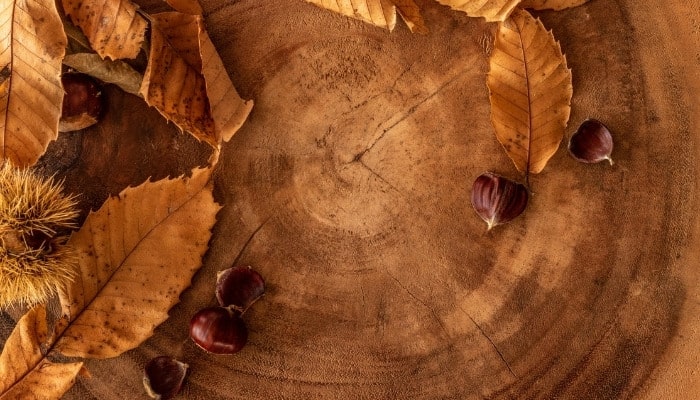
Chestnut is excellent firewood, but be warned: there are three types of common chestnut trees common in the USA, and only one of them, the American Chestnut, is good for firewood.
Horse chestnuts and Chinese chestnuts are not viable as firewood, so make sure you’re chopping down the right kind.
Once you’ve found an American chestnut, you’ll be in for a treat.
They are easy to split and light and have a deliciously sweet fragrance that will linger in your home for hours after the fire goes out.
Chestnut flames are relatively small and easy to control, but they still have high heat output for their size.
- Easy to split: Yes
- Easy to light: Yes
- Heat output: Medium
- Burn rate: Slow
- Smoke produced: Low
- Time to season: 24 months
12. Douglas Fir
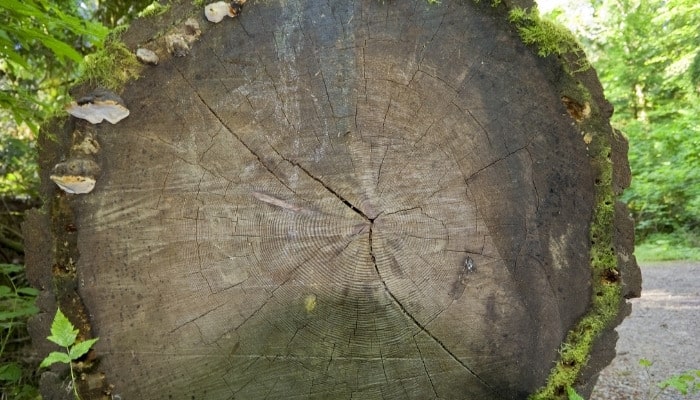
Douglas fir is ideal firewood for beginners. It is readily available all over the country, extremely easy to split, and produces high heat without too many sparks.
Because it has a straight grain and few knots, it is easy to make kindling-sized pieces.
Douglas firs are softwood trees but are still relatively dense. This makes them easier to light than hardwood trees but still burn for a decent amount of time.
Douglas firs are the preferred fir trees because they produce less sap than other related species and because they smell amazing.
Most Christmas trees are Douglas firs, so if used as firewood, you’ll really get into the holiday spirit.
- Easy to split: Yes
- Easy to light: Yes
- Heat output: High
- Burn rate: Fast-Medium
- Smoke produced: High
- Time to season: 6 months
13. Cherry

Although cherry wood only produces a medium amount of heat and burns relatively fast, it is a great beginner wood because of its easy splitting and short seasoning time.
Cherry is one of the easiest trees out there to split, and splitting can even be done with one clean strike.
You can season cherry wood in as little as six months if done properly. This means if you like to burn wood all winter, you can get enough the spring before to last you the whole cold season.
Cherry is also one of the most popular woods for campfires and fireplaces because of its subtle and pleasant smell.
- Easy to split: Yes
- Easy to light: No
- Heat output: Medium
- Burn rate: Medium
- Smoke produced: Low
- Time to season: 9 months
14. Beech
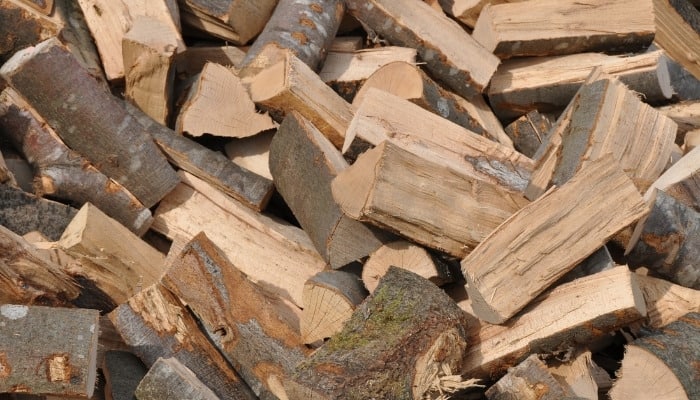
If you’re lucky enough to live in one of the areas where these beautiful trees grow, beech trees make some of the best and cleanest firewood.
Because of their unique, smooth bark, splitting beeches is not a messy process, although they can be hard to split for beginners as they sometimes have a twist in the grain.
Beech is a dense hardwood and burns for a long time while producing almost no sparks.
Unlike other hardwoods such as oak or ash, you won’t have to deal with bark flaking off and getting all over your living room floor – a big added bonus!
- Easy to split: No
- Easy to light: No
- Heat output: High
- Burn rate: Slow
- Smoke produced: Medium
- Time to season: 12 months
15. Poplar

Poplar is somewhat of a controversial choice for firewood. It’s one of the softest softwoods out there, so you’ll need a chainsaw to split it rather than an ax.
That, combined with the high spark content means some people avoid poplar in favor of harder woods.
However, there are some major benefits of softwood like poplar. It is very light in density, making logs easy to handle, transport, and store.
It also has a short seasoning time, which means it’s perfect to use at the beginning and end of the season when there’s less access to more typical firewood.
- Easy to split: No
- Easy to light: Yes
- Heat output: Low
- Burn rate: Fast
- Smoke produced: Medium
- Time to season: 6 months
Conclusion
We’ve just reviewed the 15 best firewood options for your home or campsite. Now, you can go out and chop down the right tree for you!

